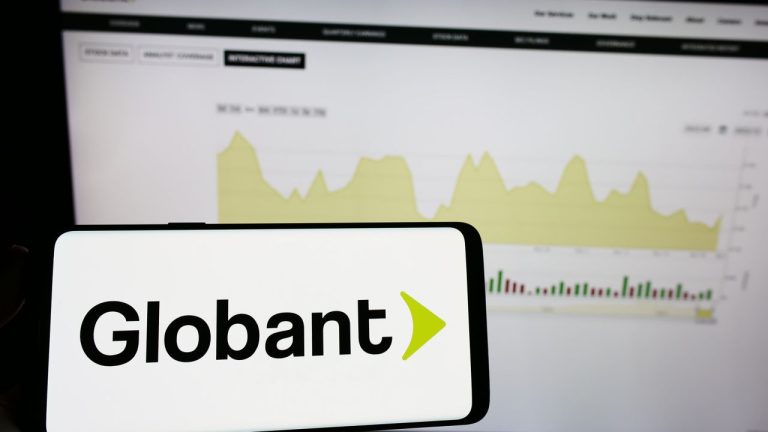
Payments firm Ripple is working with Colombia’s central bank to test the firm’s new platform for central bank digital currencies (CBDCs) and stablecoins. The Banco de la República and Colombia’s Ministry of Information and Communications Technologies (MinTIC) will pilot the use cases of the Ripple CBDC Platform with the aim of enhancing the country’s high-value […]
The post Ripple Partners With Colombia’s Central Bank To Explore Blockchain Use Cases and CBDCs Powered by the XRP Ledger appeared first on The Daily Hodl.

The pilot program will run through 2023 with the intent of demonstrating blockchain utility to the general public.
Banco de la República, Colombia’s central bank, is partnering with Peersyst and Ripple to pilot blockchain technology on the XRP ledger.
The Ministry of Information and Communications Technologies (MinTIC) in Colombia will oversee the project, which will use Ripple’s recently launched central bank digital currency (CBDC) platform.
Ripple and @Peersyst are partnering with Colombia’s @BancoRepublica in conjunction with @Ministerio_TIC to pilot use cases that will enhance Colombia’s high-value payment system.
— Ripple (@Ripple) June 15, 2023
Learn more about the partnership: https://t.co/X9jyJ3pvDa
An announcement published on June 15 says the pilot will run through 2023 and states that its purpose is to demonstrate the technology’s utility to the public:
“The goal of the third phase of MinTIC’s experimentation of blockchain will be to educate national and territorial public entities through interactive and collaborative real-world application experiments of how blockchain technology’s unparalleled speed, scalability, and transparency can revolutionize payment systems and data management.”
The XRP ledger CBDC platform also serves as the basis for similar pilot projects in Hong Kong, Bhutan, Palau and Montenegro.
CBDC team making significant progress with the launch of the new #cbdc platform Four countries now announced Grateful to the team at @Ripple who are developing the best platform for the future of Digital Currencies Palau Bhutan Montenegro Hong Kong …
— Antony Welfare (@AntonyWelfare) May 19, 2023
Ripple’s continued growth comes amid ongoing legal challenges stemming from a Securities and Exchange Commission (SEC) suit against the company filed in 2020.
The SEC alleges that Ripple sold $1.3 billion worth of unregistered securities in the form of its XRP (XRP) token. Ripple claims that XRP isn’t a security and that the SEC never gave it any notice or warning.
Related: The SEC vs. Ripple lawsuit: Everything you need to know
As Cointelegraph recently reported, the company also claims it spent $200 million defending itself from the suit. While there’s currently no definitive answer to the question of when the trial will end, it’s widely believed that the release of the so-called “Hinman documents” could affect the remaining legal proceedings.
The Hinman documents reference internal SEC communications related to a 2018 speech given by William Hinman, the former director of the SEC’s corporate finance division. During the speech, Hinman commented that cryptocurrencies such as Bitcoin (BTC) and Ether (ETH) might start out as securities but could become commodities later once they become sufficiently decentralized.
At the time, internal SEC notes indicated that the commission was concerned Hinman’s comments could make it “difficult for the agency to take a different position on Ether in the future.”
While Himan’s speech was given before the SEC’s suit against Ripple and didn’t directly reference XRP, experts argue that it shows that even the SEC understood there was confusion surrounding the agency’s treatment of cryptocurrencies.

The human rights advocacy group pulled the faked images following widespread online criticism.
Human rights advocacy group Amnesty International has retracted artificial intelligence (AI) generated images it used in a campaign to publicize police brutality in Colombia during national protests in 2021.
The group was criticized for using AI to produce the images for its social media accounts according to reports. One image, in particular, was highlighted by The Guardian on May 2.
It depicts a woman being dragged away by police during Colombia’s protests against deep and long-standing economic and social inequalities in 2021.
However, a closer look shows a few discrepancies in the image such as the uncanny-looking faces, dated police uniforms and a protestor that appears to be somehow wrapped in a flag that is not the correct flag of Colombia.
The bottom of each image also carries a disclaimer saying the images are produced by an AI.

Amnesty International told The Guardian it chose to use AI to generate images to protect protesters from possible state retribution. Erika Guevara Rosas, director for Americas at Amnesty, said:
“We have removed the images from social media posts, as we don’t want the criticism for the use of AI-generated images to distract from the core message in support of the victims and their calls for justice in Colombia,”
Photojournalists criticized the use of the images, commenting that in today’s highly polarized era of fake news people are more likely to question the media's credibility.

Media scholar Roland Meyer commented on the deleted images stating “image synthesis reproduces and reinforces visual stereotypes almost by default,” before adding they were “ultimately nothing more than propaganda.”
I can’t imagine an org that should NEVER use AI imagery more than @amnesty. These are real issues impacting the safety of real people in the real world. Photojournalists are out there documenting the reality. Using pretend imagery only hurts those who are suffering. pic.twitter.com/hN0SPvOFYi
— Shah Selbe (@shahselbe) April 30, 2023
Other images, now deleted by Amnesty, were shared by Twitter users in late April.

Related: Here’s how the crypto industry is using artificial intelligence
AI is being increasingly used to generate images and visual media. In late April, HustleGPT founder Dave Craige posted a video of the United States Republican Party using AI imagery in its political campaign.
Woa, this is crazy. The US Republican Party is already using Ai images in their ads. They show bleak images of what “could be” in the future.
— Dave Craige (@davecraige) April 28, 2023
Dang that was fast.https://t.co/q8ievnegxJ pic.twitter.com/ugMTLLcwkT
“We all knew that AI and deep-fake images were going to make it to politics, I just didn’t realize it would happen so quickly,” he exclaimed.
Cointelegraph contacted Amnesty for comment but had not received a response at the time of publication.
Magazine: AI Eye: ‘Biggest ever’ leap in AI, cool new tools, AIs are real DAOs
 Binance, the cryptocurrency exchange, has launched a prepaid cryptocurrency card in Colombia, expanding its reach in Latam. The card, which will allow customers with their identity verified to make payments with crypto, establishes the country as one of the leading markets for the exchange in Latam behind Brazil and Argentina. Binance Announces Crypto Prepaid Card […]
Binance, the cryptocurrency exchange, has launched a prepaid cryptocurrency card in Colombia, expanding its reach in Latam. The card, which will allow customers with their identity verified to make payments with crypto, establishes the country as one of the leading markets for the exchange in Latam behind Brazil and Argentina. Binance Announces Crypto Prepaid Card […] A group of countries in Latam is preparing a regional agreement to address inflation, a problem common to most nations in the region. The initiative, which is being spearheaded by Mexican president Andres Lopez Obrador, would allow the exchange of products with high prices between the states to lessen the effects of price rises. Latam […]
A group of countries in Latam is preparing a regional agreement to address inflation, a problem common to most nations in the region. The initiative, which is being spearheaded by Mexican president Andres Lopez Obrador, would allow the exchange of products with high prices between the states to lessen the effects of price rises. Latam […]
Colombia has positioned itself at the forefront of innovative ways to conduct legal proceedings after recently hosting a trial in the metaverse.
A Colombian court recently hosted its first legal trial in the Metaverse, with the court magistrate saying it felt “more real than a video call,” according to a recent report.
According to a Reuters report published on Feb. 24, Colombia’s Magdalena Administrative Court held a court case in the Metaverse on Feb. 15, involving participants in a traffic dispute.
The case, which went on for two-hours, was brought by a regional transport union against the police, which will progress “partly” in the metaverse, with a potential for the verdict to also be given in the metaverse.
The participants appeared as avatars in a virtual courtroom, with Magistrate Maria Quinones Triana dressed in black legal robes.
It was noted that Columbia is one of the first countries in the world to test legal proceedings in the metaverse, with Quinones telling Reuters that it felt more “real than a video call.”
Related: The ethics of the metaverse: Privacy, ownership and control
This comes after a recent survey released by CoinWire on Jan. 16 found that 69% of respondents believe that the metaverse will eventually modify social lifestyles due to new approaches taken for entertainment and activities.
Cathy Hackl, author of Into the Metaverse: The Essential Guide to the Business Opportunities of the Web3 era told Cointelegraph on Jan. 31 that the “physical world side” of the metaverse will “come in the next 10 years.”
Hackl added that if that is considered, then how we “socialize will be deeply impacted by the metaverse
The World Economic Forum (WEF) held in January this year was seen boasting metaverse experiences, with the conference allowing delegates to experience the forum in its own 3D immersive digital sessions called the “Global Collaboration Village.”
 Globant, a Luxembourg-based tech giant with Argentine origins, has referred to the short-term future of the metaverse in its latest Tech Trends report. According to the company, this year the metaverse will “burn bright or burn out,” as it needs to show its potential when compared to other trendsetting tech like artificial intelligence. Metaverse at […]
Globant, a Luxembourg-based tech giant with Argentine origins, has referred to the short-term future of the metaverse in its latest Tech Trends report. According to the company, this year the metaverse will “burn bright or burn out,” as it needs to show its potential when compared to other trendsetting tech like artificial intelligence. Metaverse at […] Colombian courts held one of the first judicial hearings using metaverse tech. María Victoria Quiñones Triana, the magistrate of the Magdalena court, approved the realization of this hearing, using Horizon Worlds technology provided by Meta and virtual avatars to represent participants in the process. Colombian Court Holds Metaversal Judicial Hearings A Colombian court has ostensibly […]
Colombian courts held one of the first judicial hearings using metaverse tech. María Victoria Quiñones Triana, the magistrate of the Magdalena court, approved the realization of this hearing, using Horizon Worlds technology provided by Meta and virtual avatars to represent participants in the process. Colombian Court Holds Metaversal Judicial Hearings A Colombian court has ostensibly […]
Inflation has fueled crypto growth in the region, stimulating asset tokenization and remittance infrastructure development.
Inflation, cross-border payments, assets tokenization and nonfungible tokens (NFTs) were among the major drivers for crypto adoption across Latin America in 2022, sources in the region told Cointelegraph, with exciting examples of progress across many countries.
Latin America made up 9.1% of the global crypto value received in 2022, reaching $562 billion between July 2021 and June 2022 — representing growth of 40% in the period. Four Latin American countries ranked among the top crypto adopters in the latest Chainalysis Global Adoption Index.
Major developments have contributed to these results over the past 12 months. Authorities have been working on central bank digital currencies (CBDCs), implementing standards for business operations, and clarifying regulations. Meanwhile, many companies in Latin America have been exploring ways to utilize blockchain technology and digital assets to solve the various challenges that countries in the region face.
"The region is ripe with opportunities for cryptocurrency adoption," noted a spokesperson for cryptocurrency exchange Bitso, which operates in Brazil and Argentina, among other countries in Central America, adding that:
"For both Argentina and Colombia, the impacts of inflation have driven many to use cryptocurrency. [...] For Colombia, remittances are another significant driver of adoption, even surpassing coal as a driver of dollar revenue in 2022 according to a Banco de Bogotá report."
Institutional adoption and regulatory developments have paved the way for Mercado Bitcoin to issue Brazil's first stablecoin, the MBRL, which is backed one-to-one by the Brazilian fiat currency through a partnership with Stellar. The country's central bank is scheduling for 2023 the test of its digital currency, and for 2024, its full release to over 200 million people. Also, a recently approved bill will regulate virtual assets providers after years of discussions in Congress.
"Brazil has been a major player in the crypto economy story in Latin America for several reasons: institutional adoption, regulatory advances, and general public buy-in. In that sense, public sector involvement is inevitable - this represents an extremely positive move, which enhances the crypto-active industry while providing greater security for investors," noted Fabrício Tota, director at Mercado Bitcoin.
Colombia also plans to introduce its digital currency, aiming to increase transparency and prevent tax evasion, which is estimated to account for nearly 8% of the country's gross domestic product. In Chile, the central bank has delayed plans for the issuance of the digital Chilean peso for deeper analysis of benefits and risks.
To fight inflation in Argentina, cities such as Buenos Aires and Mendonza started accepting cryptocurrencies for tax payments. At the same time, Santa Fe Province plans to implement crypto mining activities to raise funds for rail infrastructure upgrades. These may be timely initiatives given that Argentina's inflation rate is forecast to be 73.5% at the end of 2022, according to FocusEconomics panelists.
"Argentina is becoming a hub for bringing tech development and resources to Latin America from the rest of the world," said Ryan Dennis, senior manager at Stellar Development Foundation. "This naturally flows into blockchain development with a large number of startups in the country and thus a growing number of developers and founders working together in blockchain and crypto."
Latam's crypto space has also benefited from tokenization of investment products, allowing many to access products that were previously only available to large investors. "Tokenization of digital assets has been growing over the past years," including assets such as corporate bonds and real estate debts, noted Dennis.
Another reason contributing to the rise of tokenization of financial assets is the high-interest rates in the region. Most Latin American countries have double-digit interest rates, which prompts investors to seek assets with predictable returns and less volatility. This is an ideal scenario for financial companies working on tokenization and decentralized finance (DeFi) solutions.
Music and art tokenization are also trending in Latin America. "One revolution that has happened in LatAm is giving artists a window into the world of Web3," Dennis explained. "There are a lot of artists that have been able to get out of their local communities and country to become internationally renowned. That’s huge."
Crypto industry challenges in the region are similar to those seen worldwide: A lack of education about blockchain technology, insufficient regulation, and a deficit of trust. "The firms and projects that will lead the crypto in Latin America next year will be the companies thoughtfully addressing the need for increased transparency and trust," noted Bitso's spokesperson.
 Bitso, a Latam-focused cryptocurrency exchange, has partnered with chat-based payments provider Felix Pagos in order to offer Whatsapp-integrated remittances. The objective of this partnership is to put nearly instant chat-based remittances in the hands of Mexican and US users that might be intimidated by crypto tech otherwise. Bitso to Power Felix Pagos Whatsapp-Integrated Remittances Remittances […]
Bitso, a Latam-focused cryptocurrency exchange, has partnered with chat-based payments provider Felix Pagos in order to offer Whatsapp-integrated remittances. The objective of this partnership is to put nearly instant chat-based remittances in the hands of Mexican and US users that might be intimidated by crypto tech otherwise. Bitso to Power Felix Pagos Whatsapp-Integrated Remittances Remittances […]